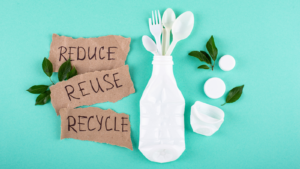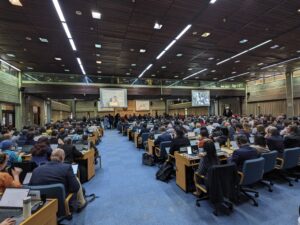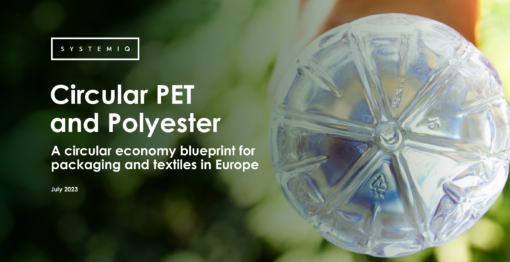
Making a desirable plan for polyester a realistic one
On 10 July 2023, Systemiq published the study “Circular PET and Polyester: A circular economy blueprint for packaging and textiles in Europe” which outlines the transition path for polyester over the next 20 years. I had the privilege of participating in the study as part of the steering group.
About the study
The study presents a roadmap for achieving a high-circularity, low-emissions PET packaging and polyester system in Europe. By implementing circular economy approaches such as demand reduction, reuse, mechanical recycling, and chemical recycling, the following outcomes can be achieved by 2040:
- One-third reduction in PET/polyester consumption
- A ~70% decrease in waste to landfill or incineration
- A 50% reduction in greenhouse gas emissions
- The creation of 28.000 net new jobs.
Overall, I believe this study portrays the desirable system change that the polyester sector should strive for, assuming other variables remain constant. However, several conditions need to be met for this scenario to become a reality. These include:
- Europe and the world’s economy not exceeding the 2-degree warming limit by 2040 (see our study on the overuse of carbon budget by the plastic industry here),
- Ensuring the safe recirculation of plastics within the economy, minimising health impacts and material contamination.
- Successful scaling up of chemical recycling for polyester/PET.
Assuming that all is fine with overstepping planetary boundaries (which, obviously, is not); that economic growth will continue undeterred (which I don’t believe); and that the recirculation of plastic over many cycles is possible without impact on human health (which remains to be proven) – the ambitious circularity scenario described in the study is a scenario I would happily sign on.
Indeed, modelling exercises are always challenging as it is impossible to account for the perfect system boundaries and, thus, any exercise like this has to take place within these limitations.
Different scenarions
Accepting the above-mentioned boundaries, this is where the most optimistic scenario could take us:
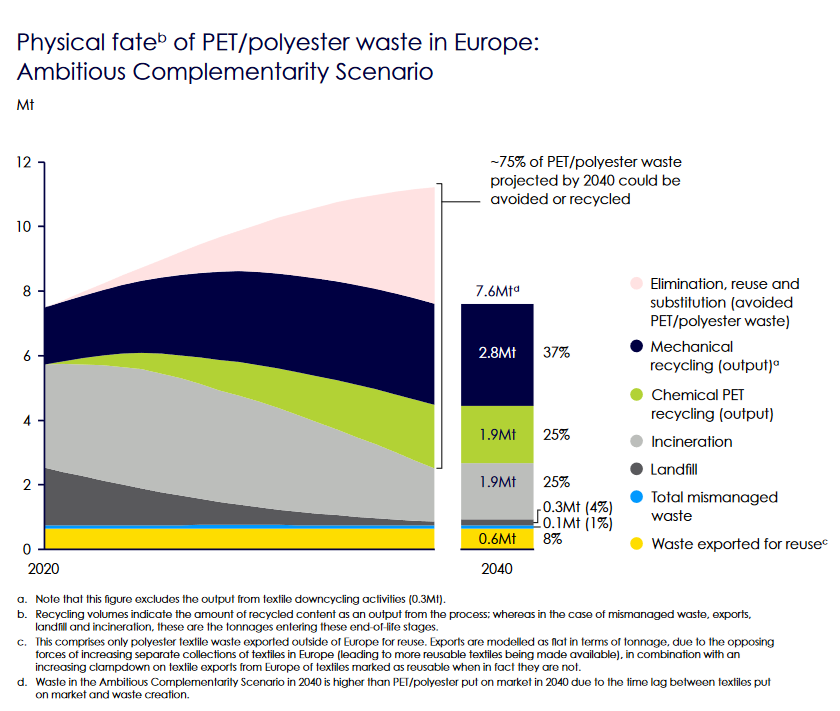
(Source: Systemiq study https://systemiq.info/circularPET)
For the scenario of reducing disposal from the current 5,9M tn to 2,2M tn by 2040 (instead of increasing to 8M tn as projected in the historical trends scenario) to happen, the following interventions need to take place:
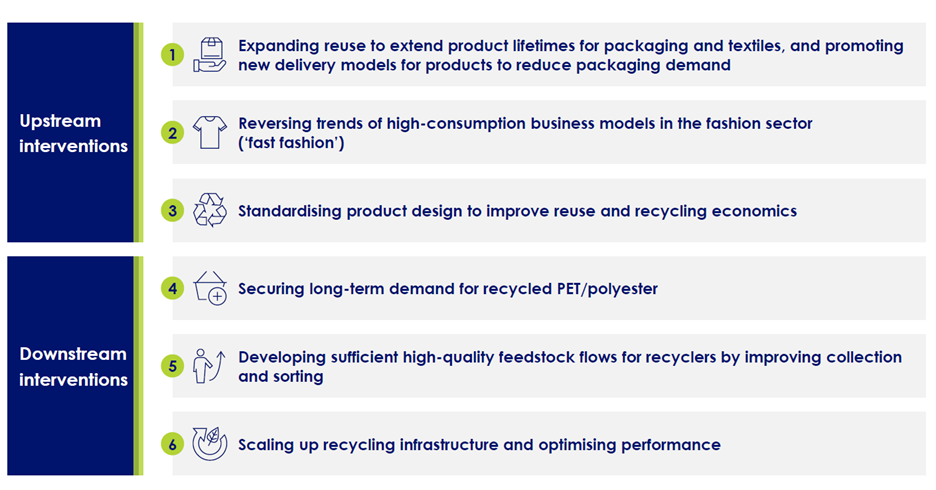
(Source: Systemiq study https://systemiq.info/circularPET)
However, the challenge lies in the fact that only four out of these six priority measures are supported by industry and policy-makers. Two of them – namely, expanding reuse to prolong the lifespan of packaging and textiles, and reversing high-consumption business models in fast fashion – face opposition from most brands in the food/beverage and fashion sectors, as well as the waste collection and management industry. Furthermore, these measures are also opposed by the center, center-right, and far-right political spectrum in the European Parliament and Council of Ministers, particularly amidst the current wave of Trumpism affecting the EU.
Without the buy-in from the industry and with the lack of political will from the policy-makers, the most likely scenario for 2040 is one that pushes collection and recycling rates and mobilises billions of euros for the waste management of polyester. The problem is that, if no reduction and reuse happen, what we are going to see is an overall increase in the environmental impact, with – at best – the same amounts of landfill and incineration (~5Mtn) and triple recycled content (from 1,5 to 4,7Mtn). Looking at the current state of negotiations in the PPWR and at the lack of proposals on the textile front, it looks like the most ambitious scenario would bring only 10 or 20% of the impact required by measures 1 and 2, hence ruining the future for the sustainability of the polyester/PET sector.
So, what should be done?
The solution is simple, yet extremely challenging: we need to apply the waste hierarchy in the real world. If we dedicate the same amount of time and resources to building infrastructure for prevention and reuse as we currently invest in collection, recycling, and disposal, we would create the beginning of a level playing field. This shift in focus would make the desirable scenario depicted in this study attainable.
For the moment I just don’t see the political will nor the industry’s vision for this. Therefore, if the ambitious scenario is to happen, we will need some unexpected exogenous variable to come into play.
